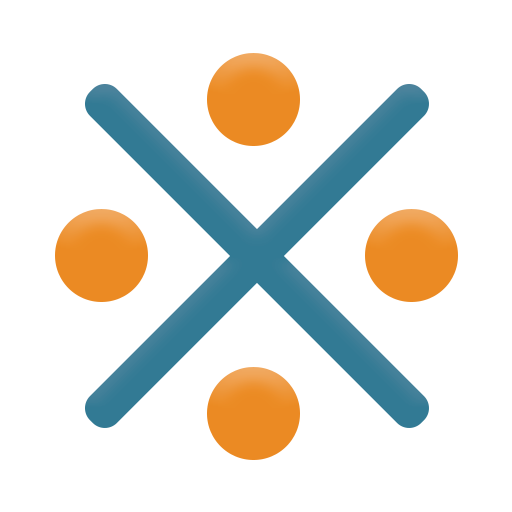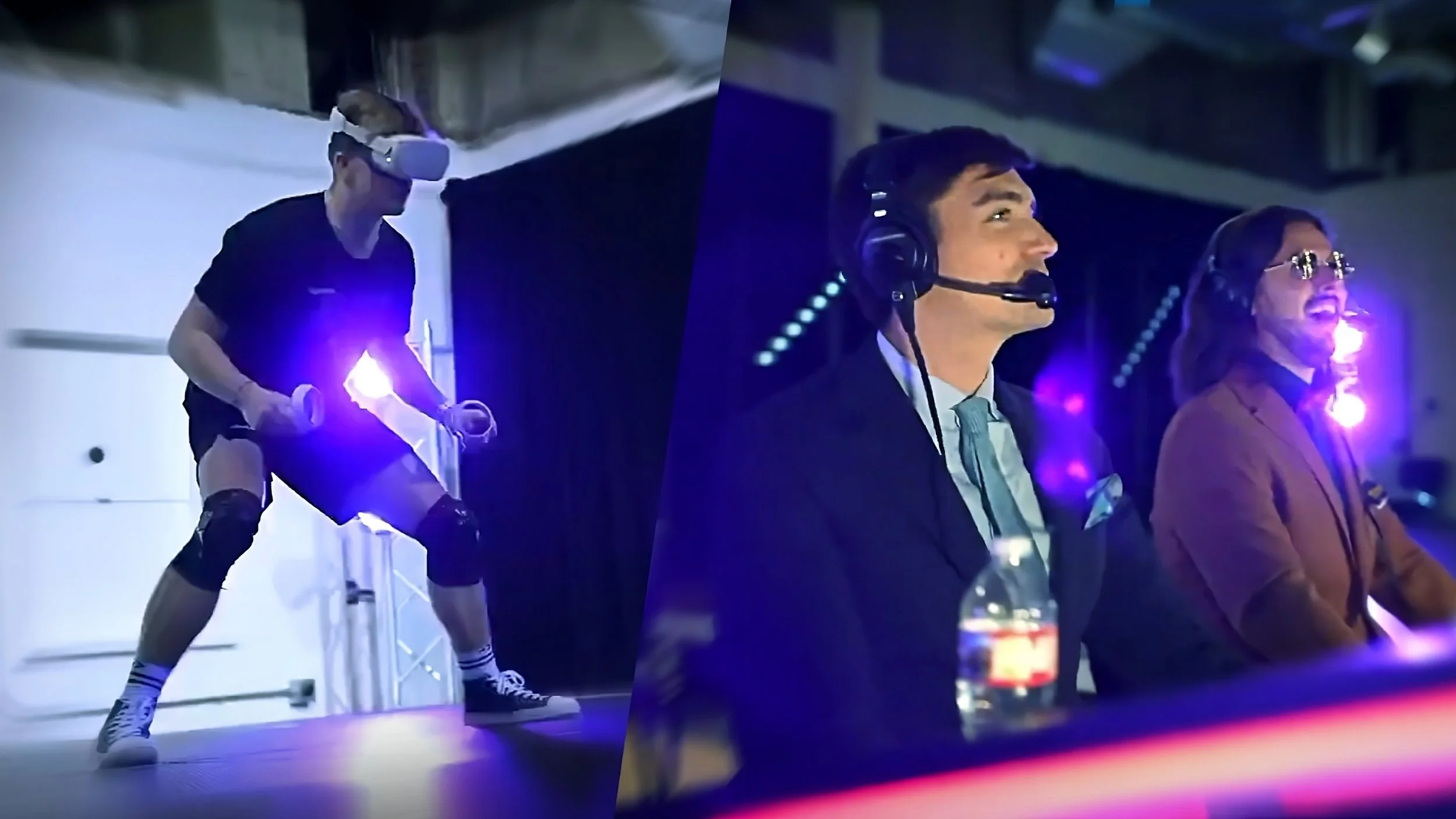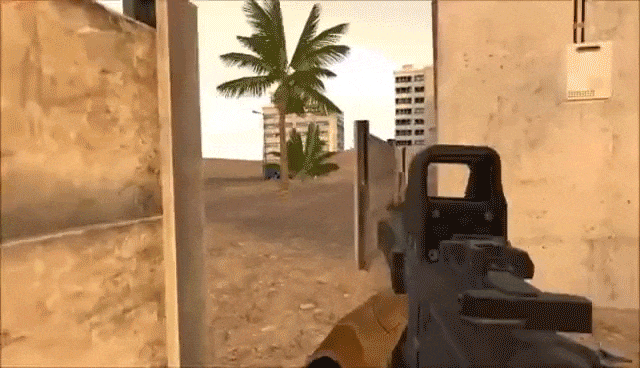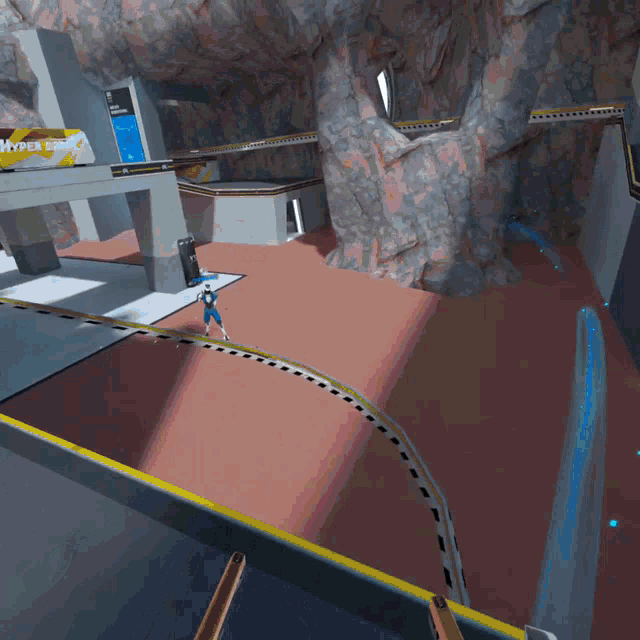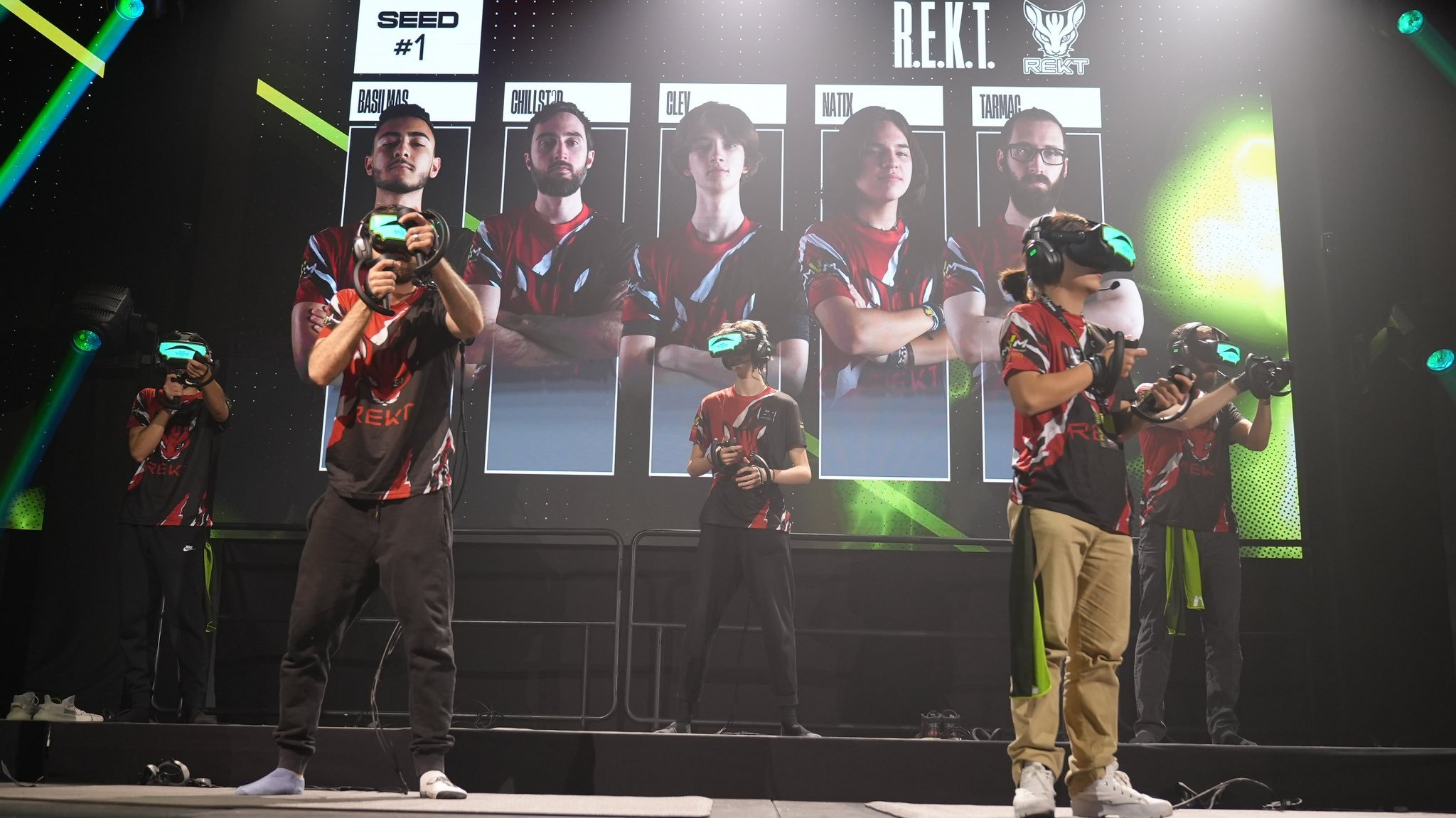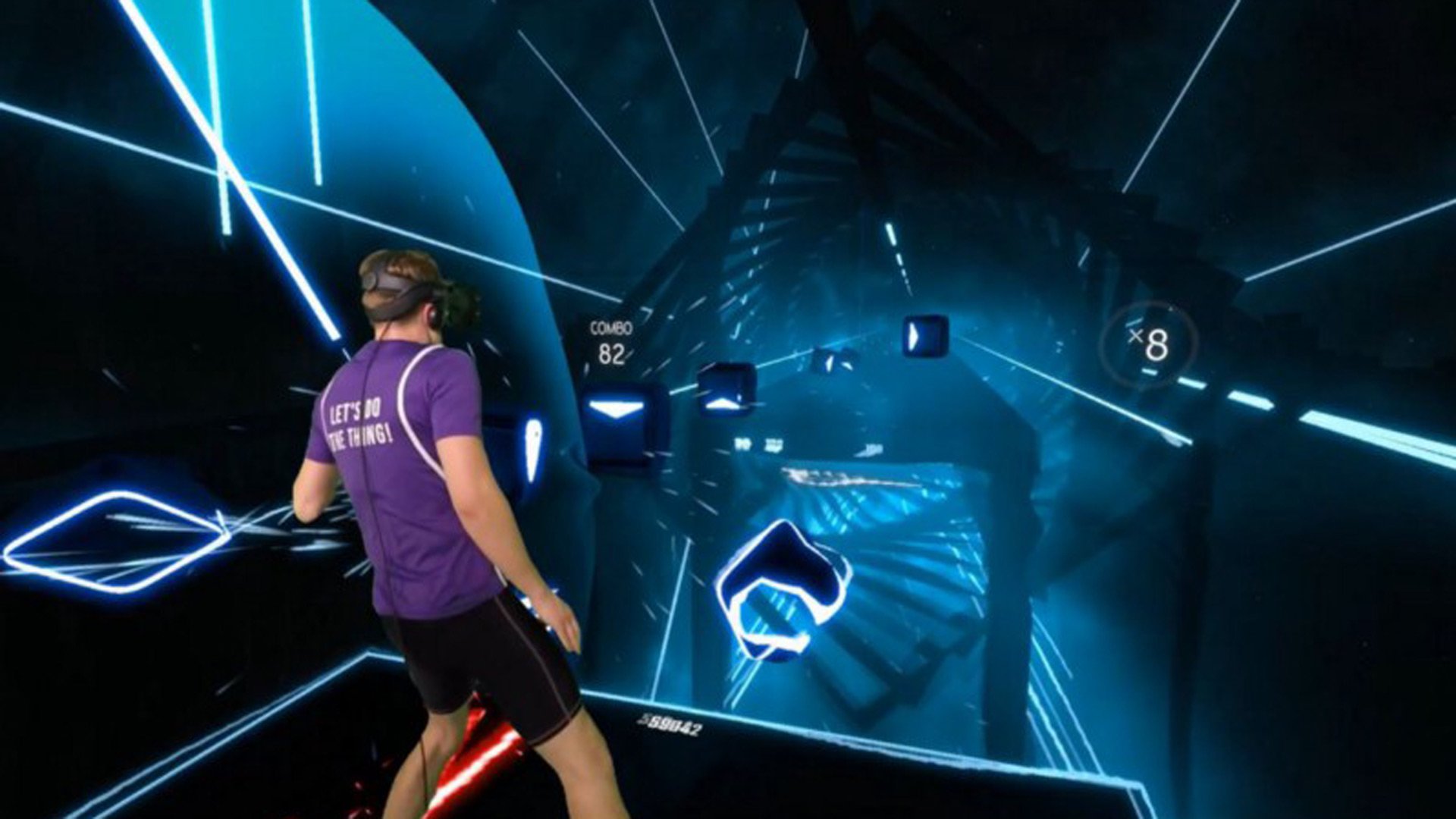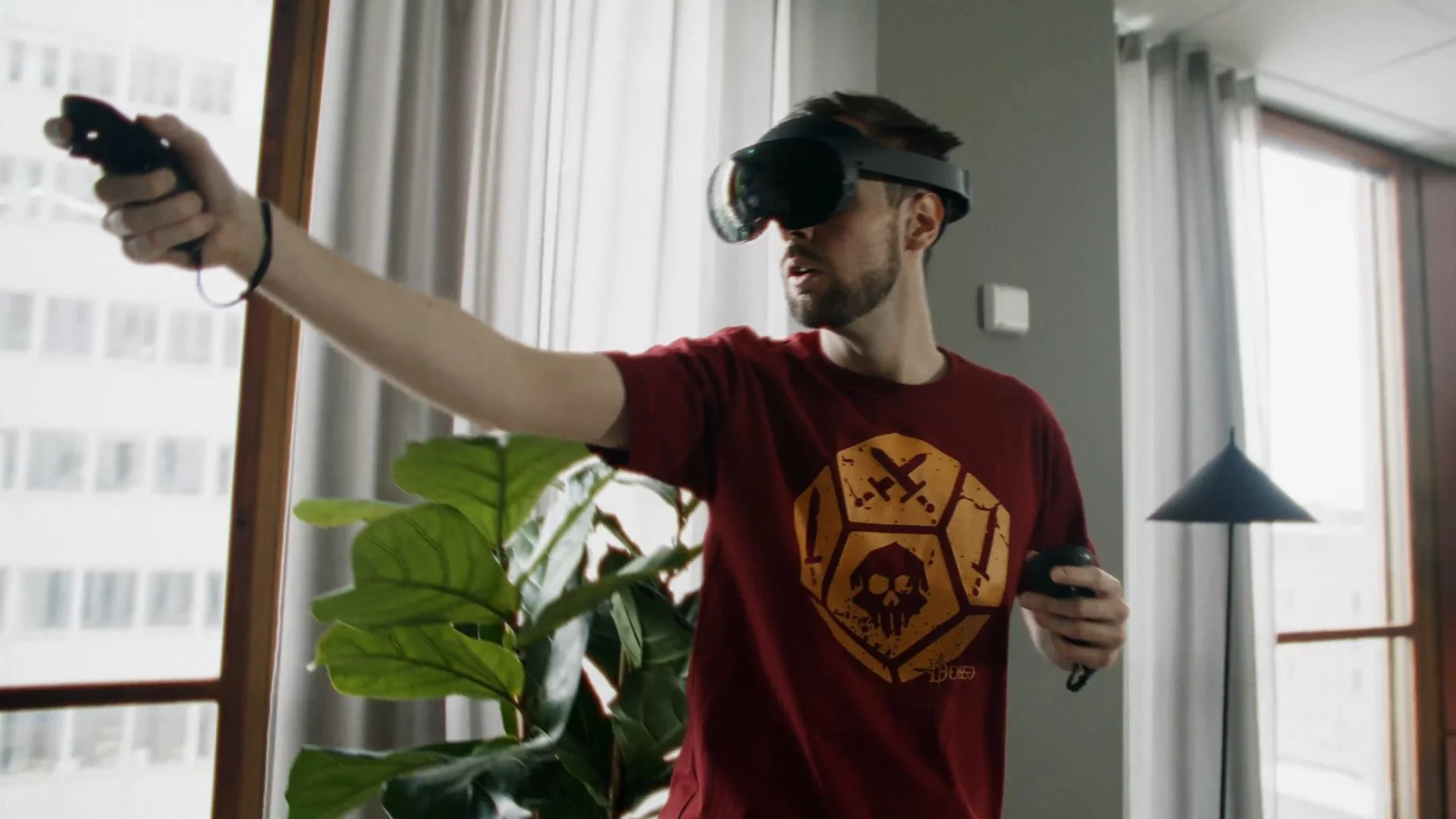Blaston: How Fitness and Gaming Collide in Esports
In the world of esports, where virtual battles captivate millions, and sometimes fill out stadiums, a game called Blaston has begun rewriting the rules. While traditional esports involve players sitting in front of screens with either a controller or keyboard at hand, Blaston takes players on a different path — where every move in real life translates into the game.
Picture this: instead of simply controlling an avatar with buttons, you become the avatar itself. Your physical actions directly impact your in-game performance, creating a unique fusion of gaming and fitness. Blaston breaks free from the stereotype of sedentary gaming, promoting healthy habits while you compete.
This is the story of an unlikely Virtual Reality (VR) game that redefined competitive gaming and created a new generation of healthy gamers.
Movement in VR: Blaston's Innovation
Blaston is a competitive 1 versus 1 bullet hell dueling shooter played in VR. The game immerses players in a cyberpunk world, where they can unleash their unique gameplay style in adrenaline-pumping duels, akin to fighting games. But here's the twist: Blaston doubles as a fitness game, requiring real-life movement to secure victory.
Over the past eight years, numerous competitive VR games have hit the scene. However, there's been no consensus on how players should navigate within the games themselves. Typically, VR shooters rely on smooth locomotion, where players remain stationary in real life and use their controller's joystick to move their in-game avatar. Some games incorporate teleporting or a blend of movement techniques to offer mobility. Unfortunately, these methods can cause discomfort for VR newcomers.
Only a handful of games encourage physical movement, but players are often confined to limited indoor space. In certain cases, players employ complex setups with backpack-mounted computers to move within predefined areas, or the game world adjusts to accommodate movement restrictions. Blaston stands out as a unique game where players embody a head, torso, and hands, confined to a platform whose dimensions mirror real-life space. Stepping outside this platform boundary results in rapid health depletion and likely defeat.
Smooth locomotion in Onward (2016), and a mix of smooth locomotion and teleportation in Hyper Dash (2021).
For Blaston, players, weapons, and projectiles possess their own health and damage systems. This, along with 30 weapons boasting various cooldown times and load-outs comprising six weapons, Blaston offers many options. Players must discover what works best for their playstyle and think about how to counter their opponents effectively.
To me, Blaston can be likened to other highly skilled competitive games like Super Smash Bros. Melee and Starcraft: Brood War, as they share a similar level of mechanical complexity and evolving metagame that keeps dedicated players hooked. These games are both accessible to pick up and learn, yet incredibly challenging to master once you start to understand their systems.
The top players in these games become nearly unbeatable until a newcomer arrives, shaking up the entire competitive scene. In Super Smash Bros. Melee, we witnessed the era of the Five Gods, and Starcraft: Brood War had its Five Bonjwas. While Blaston hasn't been around as long as these two classics, the game community has already witnessed signs of players who stand head and shoulders above the rest.
We'll delve into that later, but first, let's take a closer look at how it all began.
Various competitive VR titles played in an esports type setting.
Physicality in Practice: Impacting Blaston's Gameplay
Blaston's journey began as a prototype under the leadership of Mathieu Castelli. During the VR Fitness Summit 2020 keynote, alongside the CEO of Resolution Games, Tommy Palm, he revealed the genesis of the game and their pursuit of a competitive mechanic that would also encourage real-life movement.
The quote from Mathieu Castelli summarizes their approach:
'If you combine the power of feeling the presence of others, so that you feel like you’re next to someone [...], and you get the natural sports movement in VR. The two together quickly narrowed it down to having two players on a podium one meter apart. The players can almost touch each other, but we didn’t want them to, as you’d feel the limitations of VR such as in Ironlights or SUPERHOT VR, where the games are very physical, but as soon as you directly interact with something you can’t feel it hitting. Therefore ranged weapons became the optimal choice, then we looked to put players as close to each other as possible and then we continued from there.'
From the VR Fitness Summit of 2020, featuring Tommy Palm and Mathieu Casteilli - along with the summarized quote above.
Mathieu went on to explain how the team focused on enhancing players' perception of their avatars and movement in the game, drawing inspiration from how people learn real-life sports. While elements of this can be found in other esports games, such as muscle memory from button presses. Or VR esports titles, like optimal weapon reloading in Onward or throwing a digital frisbee at the perfect angle in Echo Arena. Blaston takes this to the next level. Players who mastered the game mechanics over time discovered how their optimal real-life movements and dodges could secure victories in the virtual realm.
This unique movement system added a new dimension to gameplay and had the unintended benefit of virtually eliminating motion sickness for players, giving Blaston an exceptional edge.
Following its release, Blaston continued to expand as a game alongside its growing community. Through updates new features were introduced such as, a social hub for players, alternate game modes, in-game tournaments, and a constant stream of new weapons and content, each introducing fresh mechanics to the game.
The Power of Community: Blaston's Vibrant Player Base
Now let's delve into what sets Blaston apart from other games—the vibrant community that surrounds it.
The Three Content Kings
At the start, Blaston had a supportive community of content creators who played a pivotal role in building a community around the game. Three notable figures made significant contributions to Blaston's identity in distinct ways. WudiPlays approached the game as a fitness app and sport and focused on viewing the game as a form of martial art. BabySpine, with a background in other esports games, focused on showcasing the game and weapon statistics. Through their guide videos, IGoldenKnight (IGK) elevated the community's understanding of techniques and combos.
These influential figures, alongside others, paved the way for aspiring players. Initially, they served as role models on the in-game leaderboards, and later players rooted for them in community-run tournaments and show matches. Both WudiPlays & BabySpine used Blaston as a tool for their fitness transformations as well and shared their progress on Reddit.
The Tournament Organizers
Content creators and the community took the initiative to organize early tournaments and events, spearheaded by individuals like Dr. Oolong, who continuously hosted numerous tournaments throughout the game's lifespan. Other notable contributors include VR League Italia (now Omnium XR), International Metaverse League, as well as top players and community members like Slowyd and Captain Fabulous, who hosted tournaments and later managed the Blaston section of the VR Master League.
The Dominant Players
Remember when we mentioned players who stood above the rest? Blaston's deep mechanics make it incredibly challenging to master, inevitably producing formidable players who seem unbeatable. Initially, the top spots on the in-game leaderboards were dominated by content creators like Wudi, IGK, and BabySpine along with other top players. However, over time, new players emerged and established themselves as dominant forces. Few have been able to defeat players like Jjjosie19 (US), 24 (US), Tesseract (UK), and Montybann (UK). You can observe their prowess just by checking Blaston's esports earnings page, which provides a glimpse into tournament results, showcasing the high level of competition in the game.
Distinct Playstyles
Throughout its lifespan, Blaston has experienced continuous changes in its meta, driven by the introduction of balancing, new weapons, and attachments. This dynamic evolution has given rise to diverse playstyles among players, showcasing distinct themes and strategies. An intriguing aspect of Blaston is how avatars mirror the height and body measurements of their real-life counterparts, which further influences individual playstyles.
A satire video created by myself showing some of the playstyles found in Blaston. The end section contains actual clips from players showcasing their playstyles.
This can be observed at the end of the 'Types of Blaston Players' video (starting at 1:24). In it, players like 24 demonstrate a strong emphasis on combining weapons to create challenging situations, showcasing impeccable movement skills, and even utilizing floor-based maneuvers to evade damage. On the other hand, players like BountyxSnipe adopt a fast-paced playstyle with quick burst plays and energetic movements. Finally, WudiPlay's approach focuses more on mastering the game's fundamentals, honing the ability to predict opponent patterns and movements.
High-Level Mechanics
Just like Starcraft: Brood War and Super Smash Bros. Melee, learning the intricate mechanics and movement optimization in Blaston is crucial for success in the game. One notable technique is "Drop Blocking", where players strategically drop their weapon to use it as cover against incoming projectiles. Seasoned players possess the knowledge and timing to execute this maneuver effectively, minimizing damage taken.
Another technique, "Juggling", capitalizes on the limited weapon slots and cooldowns in Blaston. Players like WudiPlays and Jjjosie19 showcase their skill by deftly juggling weapons, allowing them to activate multiple abilities simultaneously, gaining an advantageous edge in combat.
Jjjosie19 juggling three nades in the finals of the VR Summer Games.
Another unique aspect of Blaston as well is the Curve mechanic. Certain weapons enable players to curve bullets (yes, like the Wanted movie). By adjusting the speed and angle of their weapon swing before firing, skilled players can fire projectiles with unexpected and precise trajectories, catching opponents off guard and dealing significant damage.
By refining these techniques and harnessing the game's mechanics, players can gain a competitive advantage, showcasing the depth and strategic possibilities offered by Blaston.
The Challenges and Growth of Competition
Over the years, Blaston has become a mainstay in VR competition, but the journey hasn't been easy. The community has faced challenges and has been forced to learn from dubious events to get where it is today. The game was launched in late 2020, right at the beginning of the pandemic. This posed various obstacles to the game and community's growth, with VR arcades shutting down and in-person esports events being canceled. However, with the release of Quest 2 and people being forced to stay at home, an online scene was built instead. Online grassroots tournaments played a significant role in the game's growth as well.
A significant milestone became when Blaston was announced to be a part of the VR Summer Games 2021, a Virtual Athletics League-hosted event. This marked the first official esports tournament in partnership with Resolution Games, attracting 107 registrants split into the "Open" and "Premiere" player brackets.
This is also where the Blaston Spectator was introduced. Here players could now watch matches from multiple camera angles and broadcast their own matches, which enhanced the viewing experience. The tournament finals received great attention, appearing on the front page of Twitch and attracting between 1400 and 2000 concurrent viewers. It became one of the most-watched VR Esports tournaments of 2021, generating numerous memorable moments and establishing itself as a major tournament for the game.
Gameplay highlights from the VAL VR Summer Games 2021.
Establishing Leagues & Championships
In the first half of 2022, following the independently hosted VR Winter Games by Virtual Athletics League, Resolution Games partnered with VR Master League to establish the game's first official esports circuit. The circuit began with an invitational to showcase the game, followed by the inaugural season. This structure united the competitive community, engaging players and content creators as competitors, casters, and tournament organizers.
Writers Note: As someone who has worked with esports and mainly supported and observed the community from the ‘outside’, it’s always been interesting to me to see how a lot of the people involved in VR esports have no connection at all to ‘regular’ esports. Esports has had a long road of learnings and failures, and VR esports, including Blaston, seems to have skipped all of these learnings to start from scratch. In some regards, VR esports feels to me like esports were back in the 2006-2008 era of absolutely no money or sponsorships, and tournaments often run by people with a huge deal of passion, but sometimes a significant knowledge gap, usually resulting in some suboptimal scenarios and lower quality presentations in live broadcasts.
Besides the ‘gamers’ in VR esports, there are plenty of people that get into it with a background in regular sports. This to me makes it clear why when you look at a VRML broadcast as an example, the setup and graphics remind you more of what you’d imagine the NFL or NBA do, rather than what Blast, ESL, or GSL does for their live streams of games.
Towards the end of Season 01 of the VR Master League for Blaston, the Blaston Championship was unveiled. With a $10,000 prize pool (plus an additional $1,000 for the Last Chance Qualifier) directed towards the North American and European regions, this tournament became one of the largest in scale. Players accumulated points through the ranked mode, weekly in-game ladder challenges, and community-sanctioned tournaments, leading to the regional finals event.
The unveiling of the Blaston Championship in the form of a format explainer video.
The finals were a celebration within the community, featuring commentary from renowned figures like James Chen and UltraDavid from the fighting game community. The tournament showcased a mix of skilled players including content creators, top-ranked players, and the dominant competitors who solidified their status at the top, competing for the prize money live on Twitch.
Highlights from the Blaston Championship finals event.
In late 2023 after a short break from competitions, it was announced that Blaston would transition from a premium game model ($9.99 initially, then $19.99) to a free-to-play one, with the aim to expand its accessibility and player base. Simultaneously, the 2nd season of VRML was announced, which would culminate in the first-ever in-person Blaston matches, live on a stage, at VRML Con in Denver, Colorado.
Following a spring full of intense matches and a challenging playoff stage, the dominating players once again secured the four spots to compete at the event. Representing the North American region were 24 and Jjjosie19, while Tesseract and Montybann represented Europe.
Although the event may not have achieved remarkable viewership numbers, it held significant importance for the community, serving as an opportunity for players to meet for the first time and celebrate the game together.
The story of Blaston is not yet over, and competition in VR is still in some regards getting started. VR as a whole is still in the early stages, and the potential for games on this platform and their communities is immense. In this short amount of time, we have witnessed remarkable achievements that could reshape our perception of digital competitions, both in the present and as a captivating chapter in history.
As for Blaston, I’m proud to have been able to support it and observe it along the way, and I’m still excited for what’s to come when thinking about the future of esports.
Background & Context
Pictured: Me, in a Meta Quest Pro headset in a trailer for the AR game Spatial Ops.
In case you're wondering why I'm so invested in this story, I worked as a Community Manager for Blaston at Resolution Games for 2.5 years until about a month ago, when the company unexpectedly laid me off along with many others.
Blaston was the first game I worked on at the company, and it became deeply intertwined with my identity. During my time there, I made it my personal mission to provide unwavering support to the game and its community to the best of my abilities.
As you may have gathered from the wording, my extreme dedication may not have been the healthiest choice, but I have no regrets. In addition to my community work during the day, I sometimes went beyond my expected responsibilities. I took on tasks such as producing, hosting, broadcasting, and even single-handedly managing the entire finals event of the VAL Summer Games on a laptop when I realized the organizers lacked the expertise to do so. I met with key community members outside of work whenever possible. And when it was publicly revealed that the game would test ad implementation, I found myself at the center of perhaps the largest meltdown ever witnessed in a VR game community. For about a week straight, I attempted to manage the situation day and night.
There have been numerous moments that deeply connected me to this community, and I am grateful for the opportunities I had to do so. I also feel a sense of sadness that my journey with Blaston unexpectedly ended the way it did. I repeatedly tried to pitch the story and history of Blaston and its competitive community to one of my favorite YouTube channels, Akshon Esports, but after being ignored and receiving no responses for years, I realized I might have to publish it myself. Perhaps there is room for a video version of it someday. Only time will tell.
To me, writing this piece felt necessary as I have been intricately connected with the game and its members for quite some time. For better or worse, it will likely become a core memory for me as I move forward.
So with that said, thank you for taking the time to read my story, and I hope you have a wonderful day.
